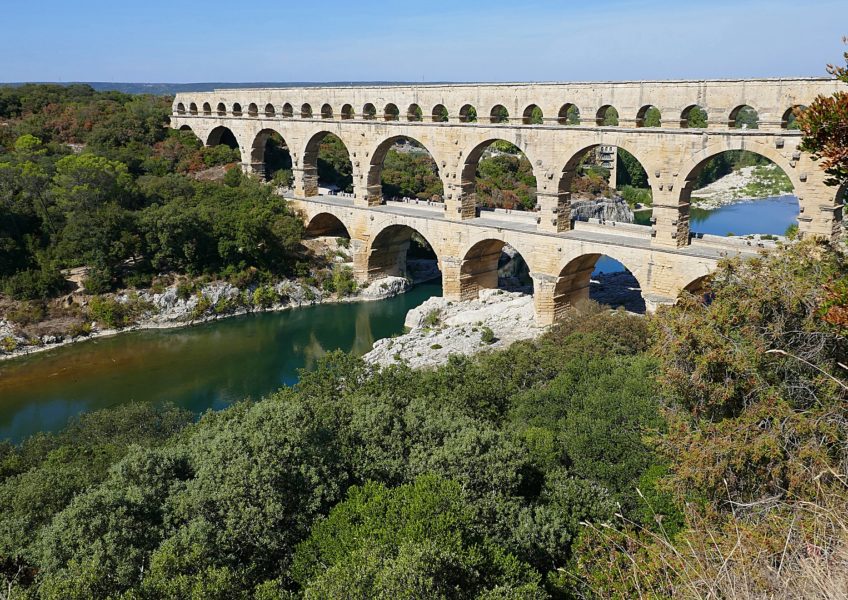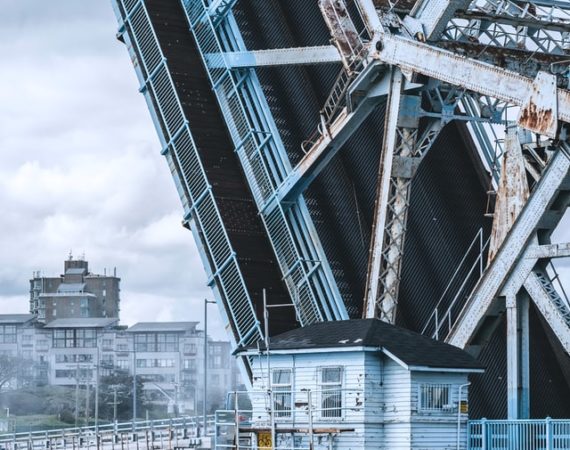The Pont du Gard Aqueduct in France
Crossing the Gardon River in southern France, the Pont Du Gard is one of the best-preserved ancient aqueduct bridges built in the first century AD by the Romans. In 1985 it was added to the list of World Heritage Sites by UNESCO (United Nations Educational, Scientific, and Cultural Organization) for its historical importance. By the 1990’s the aqueduct had become a large tourist attraction and is now one of France’s top five tourist attractions.
The Construction
It’s believed that the bridge took around fifteen years, and 800 to 1,000 workers to complete. The bridge is constructed of shelly limestone with three tiers of arches, stands 160 ft high, and drops 41 ft throughout the whole aqueduct. The first tier is adjoined to a road bridge that was added during the 18th century, and the third tier carries the water conduit. Some of the limestone blocks weigh up to 6 tons, with a majority of the stone being extracted from the Gardon River banks downstream. The bridge was constructed without the use of clamps or mortar since the blocks were cut to fit together by gravity and friction. Various instructions and messages were inscribed on the blocks by builders with numbers and required locations to guide them.
Renovations
The aqueduct originally carried 8,800,000 imperial gallons of water every day to the citizens of Nimes until sometime around the 6th century when a lack of maintenance and clogging stopped the flow of water. The bridge stayed intact and was used as a toll bridge after the fall of the Roman Empire and the disuse of the aqueduct. Local bishops and lords levied tolls on travelers crossing the river to pay for the upkeep of the bridge.
During the 17th century and over time, serious damage occurred and stone blocks were stolen. Between 1743 and 1747, a new bridge built by Henri Pitot was added so that road traffic would be able to cross. Unfortunately, the bridge continued to deteriorate and was close to collapsing. In the 1800’s, Napoleon III approved architectural plans to repair the bridge with funding by the Ministry of State. With continuous repairs and restoration projects throughout the years, the Pont du Gard also continues to survive through major recent flooding.
Forensic Engineering Specialists
Engineering Specialists Inc. has nearly 30 years of field experience in analyzing the damage to residential, commercial, and industrial buildings. We can work on any project in any state, nationwide. When you or your business needs to confirm the extent of damage or how to correct a problem, email us at office@esinationwide.com or call us, toll-free, at (877) 559-4010.




